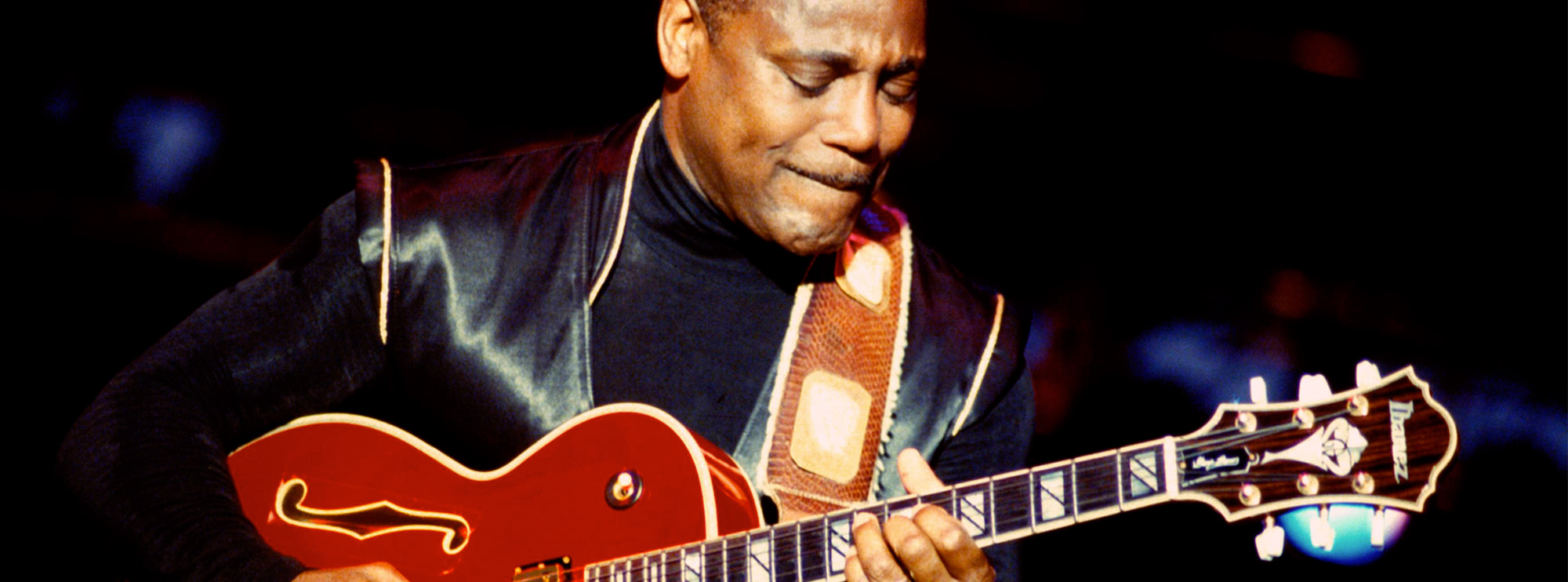(You Can Still) Rock In America – Night Ranger
Get ready to dive into the powerhouse of '80s rock guitar with our in-depth, note-for-note breakdown of “(You Can Still) Rock In America” by Night Ranger. This explosive track from their 1983 album Midnight Madness combines soaring vocals, dynamic riffs, and jaw-dropping solos—making it the perfect study for intermediate to advanced players looking to sharpen their rock guitar skills.
At LickLibrary, we’ve broken this song down section by section to give you a comprehensive understanding of all the guitar parts, focusing on both rhythm and lead techniques. This lesson not only teaches you how to play the song as it was originally recorded but also arms you with a powerful arsenal of rock techniques that can be applied across your entire playing repertoire. Sam Bell breaks down this classic track in this exclusive Lick Library video tutorial.
About the Guitar Players
Night Ranger’s unique guitar sound is the result of the combined talents of Brad Gillis and Jeff Watson. Brad Gillis, known for his aggressive tone and masterful use of the whammy bar, delivers explosive solos filled with energy and emotion. Jeff Watson complements this with a more fluid, melodic style, incorporating advanced techniques like two-handed tapping and legato playing.
Together, they created some of the most memorable dual-guitar arrangements of the decade. Their influence has been far-reaching, inspiring generations of guitarists with their ability to blend technical proficiency with memorable, melodic lines. Studying their work in this track offers invaluable insights into how two contrasting guitar styles can create something truly iconic.
Technique Breakdown
Palm Muting
Throughout the verse and intro riffs, palm muting adds percussive attack and tightness to the tone. It sharpens the groove and adds control to your rhythm playing, making it an essential technique for mastering rock dynamics and timing.
Power Chords
Driving much of the song’s rhythm, power chords are the backbone of the arrangement. Playing them tightly and cleanly underpins your rhythm accuracy and ensures you're nailing the energy and crunch essential to hard rock.
Dual-Guitar Harmonies
This track features stunning dual-guitar harmonies that highlight the interplay between Gillis and Watson. Practicing harmonised leads develops your ear for intervals and your ability to play in sync with other musicians—ideal for band situations or writing twin-lead parts.
Alternate Picking
Precision is key during many of the riff and solo passages in the song, and alternate picking helps deliver this. Practicing it here improves right-hand accuracy and allows for increased speed and articulation.
Legato
Jeff Watson’s smooth, flowing lead lines often rely on legato phrasing—specifically, a blend of hammer-ons and pull-offs. Mastering this will make your solos sound more fluid and allow you to play complex passages with less physical effort.
String Bending & Vibrato
Expressive string bends and wide vibrato play a huge role in bringing solos to life in this track. These techniques help you develop feel and pitch control, two essential elements for expressive lead playing.
Dive Bombs & Whammy Bar Tricks
Brad Gillis showcases his signature whammy bar techniques throughout the song with dramatic dive bombs and pitch warbles. Learning these tricks adds theatrical flair to your solos and opens up new expressive options for your playing style.
Pinched Harmonics
Used for emphasis and attitude, pinched harmonics add bite to riffs and solos. They’re a great way to highlight certain notes and give your tone a more aggressive edge.
Tapped Harmonics
Adding a shimmering texture to certain phrases, tapped harmonics demand precision and control but provide an impressive, bell-like tone that’s especially effective in rock and metal contexts.
Two-Handed Tapping
Jeff Watson’s famous two-handed tapping technique is one of the standout moments in the solo. This method enables lightning-fast runs and extended note reach, greatly expanding your lead guitar capabilities.
Why You Should Learn This Song
"(You Can Still) Rock In America” is more than just a hard-hitting anthem—it's a treasure trove of rock guitar techniques. From high-energy riffs to harmonised solos and flashy whammy bar dives, this song will challenge and inspire players looking to step up their technical game. Each section teaches real-world applications of advanced playing concepts, and by mastering it, you’ll improve both your rhythm and lead playing skills.
Whether you're a fan of '80s rock or simply looking to improve your command of classic guitar techniques, this lesson offers a rewarding experience that will resonate across your entire playing style.
Techniques Used in This Lesson
- Vibrato
- Alternate Picking
- Legato
- Tapped Harmonics
- Double-Stop Bends
- Unison Bends
- Pinched Harmonics
- Dive Bombs
- Power Chords
- Palm Muting
- Two-Handed Tapping
- String Bending
- Whammy Bar Tricks
- Dual-Guitar Harmonies
Join LickLibrary today and master “(You Can Still) Rock In America” while developing advanced rock guitar skills that will transform your playing.

About The Tutor
Tutor Profile
Sam Bell
Sam Bell has been playing guitar from the age of 4, since then he has played many styles from Funky Blues to screaming Metal/Fusion on 8 string guitar. A member of UK tech metal band ‘Mask of Judas’, he is also currently writing his own solo instrumental album. He also...




